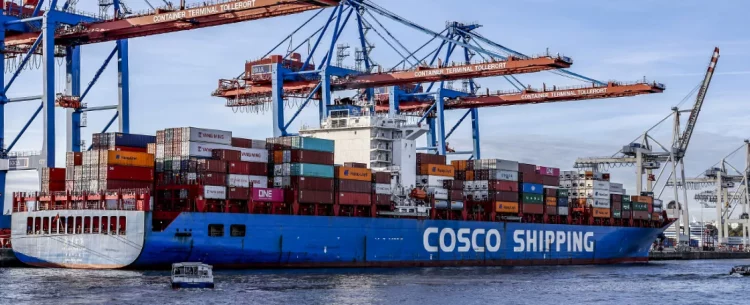Introduction:
The relationship between the United States and the European Union has long been a cornerstone of the global economy, characterized by deep trade and economic ties. However, in recent years, trade tensions have escalated, driven by disputes over tariffs, trade barriers, and regulatory conflicts. While the U.S. and the EU have historically been allies, these economic frictions are threatening to disrupt their trade dynamics and reshape the global marketplace.
In this article, we will examine the key issues behind the US-EU trade tensions, analyze the industries most impacted by these disputes, and explore the broader global implications. Finally, we’ll assess whether these tensions signal a shift toward a more protectionist future or if there is room for diplomacy and new trade agreements to restore stability.
Key Disputes:
Trade tensions between the U.S. and the EU have primarily revolved around several key sectors, each of which has significant implications for both economies and their global partners. The most prominent areas of dispute include:
- Steel and Aluminum Tariffs:
In 2018, the Trump administration imposed hefty tariffs on steel and aluminum imports, citing national security concerns. These tariffs were applied globally but had a particularly large impact on the EU, which is a major supplier of these metals to the U.S. In retaliation, the EU imposed counter-tariffs on a range of American products, including whiskey, motorcycles, and jeans.
The steel and aluminum tariffs have remained a contentious issue, with both sides engaging in negotiations and occasional ceasefires, but no long-term resolution. The tariffs have not only affected trade flows between the U.S. and the EU but have also disrupted global supply chains and raised concerns about trade protectionism and its impact on manufacturing.
- Agricultural Products and Hormone Beef:
Agricultural trade has been another flashpoint in US-EU relations. The U.S. has long sought greater access to European markets for its agricultural products, including hormone-treated beef and genetically modified organisms (GMOs), which are restricted in the EU due to stringent food safety standards.
In turn, the EU has expressed concerns about the U.S. practice of using subsidies for its agricultural sector, accusing American farmers of benefiting from unfair government support. This has led to trade tensions over products like soybeans and poultry, which are often caught up in tariff disputes.
- Technology and Digital Services:
The tech sector has become another battlefield for U.S.-EU trade. Issues like data privacy, digital taxation, and regulatory standards have sparked conflict. The EU’s General Data Protection Regulation (GDPR), which imposes strict rules on how companies handle consumer data, has caused friction with U.S.-based tech giants like Google and Facebook. The U.S. government has repeatedly criticized the GDPR, claiming that it hinders the ability of American companies to do business in Europe.
Furthermore, the EU has considered imposing digital taxes on large U.S. tech firms, particularly those that generate significant revenue from European markets. These taxes are seen as a response to perceived tax avoidance strategies employed by tech giants, but the U.S. has warned that such measures could lead to retaliatory tariffs or trade sanctions.

Impact on Businesses:
The ongoing trade tensions between the U.S. and the EU have created significant challenges for businesses on both sides of the Atlantic. These tensions have forced companies to rethink their supply chain strategies, adjust to new tariff regimes, and navigate a complex web of regulations.
- Supply Chain Adjustments:
With tariffs and trade barriers in place, American and European companies have been forced to reconsider their sourcing strategies. Many companies that once relied on imports of raw materials, such as steel and aluminum from the EU, are now seeking to diversify their supply chains to avoid higher costs. Similarly, European businesses that traditionally exported agricultural products to the U.S. are now looking to alternative markets to mitigate the impact of tariffs.
This shift is also affecting the global supply chain, as companies scramble to find new suppliers or adjust their manufacturing strategies. For example, firms in the automotive sector, which relies heavily on cross-border supply chains, are facing higher costs for raw materials and parts due to the tariffs on steel and aluminum. Similarly, the agricultural sector is dealing with disruptions in exports and imports, with the U.S. and EU both seeking to protect their domestic markets.
- Increased Costs and Uncertainty:
The introduction of tariffs has resulted in higher costs for both producers and consumers, particularly in sectors that are heavily impacted by trade restrictions. U.S. manufacturers that rely on European steel and aluminum have faced increased production costs, while European agricultural exporters have been hit by tariffs on key products like beef and wine.
For businesses operating in digital services and technology, the uncertainty surrounding data privacy and digital tax regulations has created an additional layer of risk. Companies are forced to navigate a complex regulatory environment and face the possibility of double taxation or fines for non-compliance with regional laws like GDPR. The uncertainty surrounding these regulations is also making it difficult for companies to plan long-term investments in Europe.
- Shift in Investment Strategies:
As a result of the uncertainty created by the trade tensions, businesses are becoming more cautious in their investment strategies. U.S. firms are reconsidering their investments in Europe, particularly in industries such as automotive, agriculture, and technology, where tariffs and regulatory hurdles are a major concern.
Likewise, European firms are seeking to reduce their reliance on the U.S. market and are looking for growth opportunities in other regions, such as Asia or Latin America. Some companies are even considering relocating manufacturing or sourcing operations to countries outside the U.S. and the EU to avoid tariffs altogether.
Global Implications:
The US-EU trade tensions are not only impacting American and European businesses but are also having ripple effects on global markets, particularly in emerging economies that rely heavily on trade with the U.S. and EU.
- Emerging Markets:
Countries in Asia, Latin America, and Africa, which rely on exports to the U.S. and the EU, could see significant disruptions in trade flows due to the escalating tensions between the two economic giants. For example, countries like China, India, and Brazil, which export large quantities of goods to both the U.S. and the EU, are caught in the crossfire. These nations could face delays, higher costs, and a slowdown in demand for their products, all of which could hinder their economic growth. - Global Supply Chain Disruptions:
The trade barriers and tariffs resulting from the U.S.-EU disputes are also likely to have significant global supply chain impacts. For example, global manufacturers that rely on inputs from both the U.S. and the EU may experience delays and higher costs, forcing them to find alternative suppliers in other regions. As businesses seek to diversify their supply chains away from U.S.-EU trade routes, global supply chains could become more fragmented, leading to inefficiencies and rising costs. - Potential for Trade Diversion:
Emerging economies may benefit from trade diversion, as U.S. and EU companies look for alternative suppliers. For instance, countries like Vietnam, Mexico, and Turkey could see increased demand for their products if they are able to provide more cost-effective alternatives to U.S. or EU suppliers. However, this is likely to be a temporary shift, as the underlying tensions between the U.S. and the EU may ultimately disrupt global trade flows in the long term.
Outlook:
As of 2025, the US-EU trade relationship remains in a state of flux, with no clear resolution to the ongoing tensions. While diplomatic efforts and negotiations have yielded some temporary solutions, long-term stability is still uncertain. Several potential scenarios could unfold:
- Continued Protectionism:
If both the U.S. and the EU continue to prioritize protectionist policies, the trade tensions could escalate further. Additional tariffs, regulatory hurdles, and trade wars could disrupt global supply chains and economic growth. - New Trade Agreements:
Alternatively, both sides could choose to engage in more cooperative diplomacy and seek new trade agreements that address the concerns of both parties. A new transatlantic trade deal could reduce tariffs, establish clearer regulations, and create a more stable environment for businesses. - Regionalization of Trade:
A third possibility is the continued regionalization of trade, with the U.S. and the EU turning increasingly inward, relying more on trade within their respective regions and reducing dependency on global trade. This could lead to a more fragmented global economy but could also provide opportunities for other regions to expand their trade with the U.S. and the EU.
Ultimately, the future of US-EU trade relations will depend on how both sides choose to navigate these tensions, balancing the need for protectionism with the desire for economic growth and stability.




































